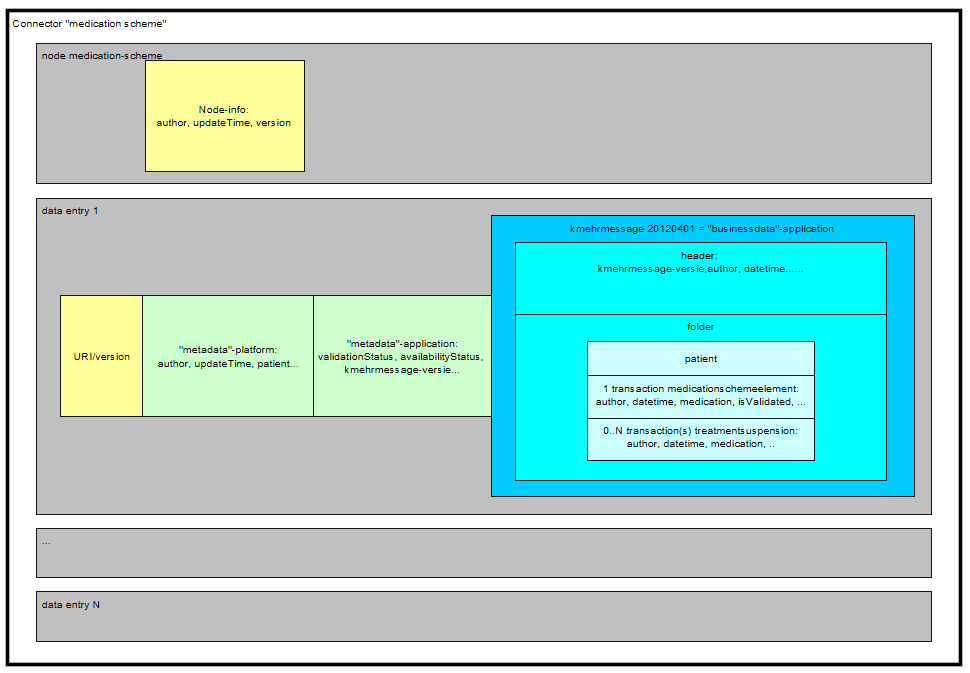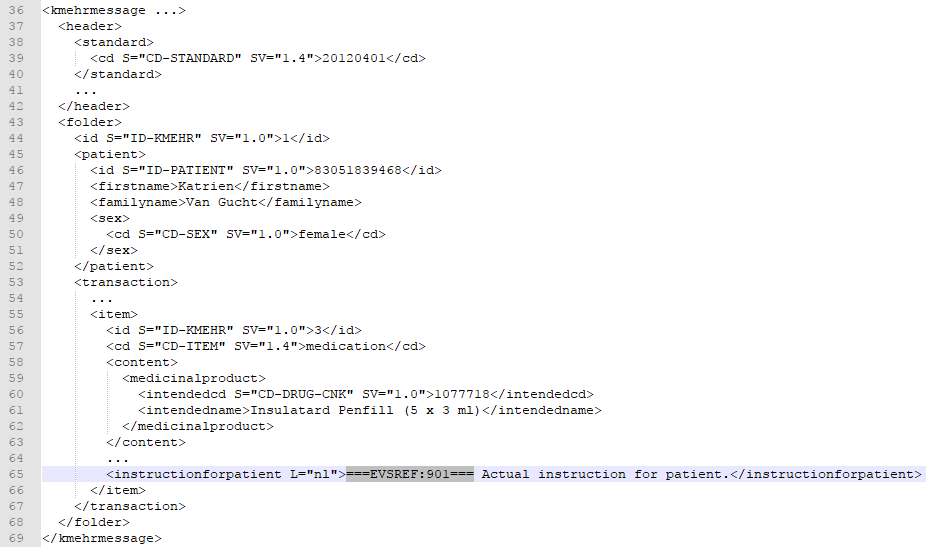...
Any type of files, with any extension, can be dropped. They are considered as "input-files". EVS will, depending on the action folder, parse the files and extract the Kmehrmessage(s).
What is a Kmehrmessage?
A Kmehrmessage is that part of the file that starts with <<kmehrmessage ...> and ends with </kmehrmessage>. One file can contain 0 or more Kmehrmessages.
...
All other data (among which the metadata) will be generated by the EVS and/or the Vitalink platform. As input the business data as depicted in blue here below will be used:
How is a Kmehrmessage identified?
For some actions, typically removing and updating data entries, the input Kmehrmessage need to have an identification.
There are 2 way to identify Kmehrmessages: by Vitalink ID and by EVS reference.
Identification by Vitalink ID
The Kmehrmessage can be preceeded by a Vitalink URI.
In the next example, this URI is /subject/83051839468/medication-scheme/32055/1. From this URI, EVS finally uses "32055" as unique ID.
Identification by EVS reference
An EVS reference is put in 1 (and only 1) free text field in the concerned Kmehrmessage.
Which actions?
Depending on the folder where the inout-file is dropped, EVS will execute an action.
Action "add"
This action will add a a data entry to the vault for each Kmehrmessage found in all dropped files.
In the example below, 3 Kmehrmessages are dropped to be added to the vault:
Action "empty"
This action will remove all data entries from the vault. EVS will do this action once for each dropped file, without any parsing.
In the example below, a newly created file will trigger emptying of the vault by removing all existing data entries:
Action "export"
This action will export the contents of the vault, without any change to the vault itself. EVS will do this action once for each dropped file, without any parsing. .
In the example below, a newly created file will trigger exporting the contents of the vault by removing all existing data entries:
Action "removeID"
This action will remove the data entries identified by the URI in
Action "removeREF"
Action "replace"
...






